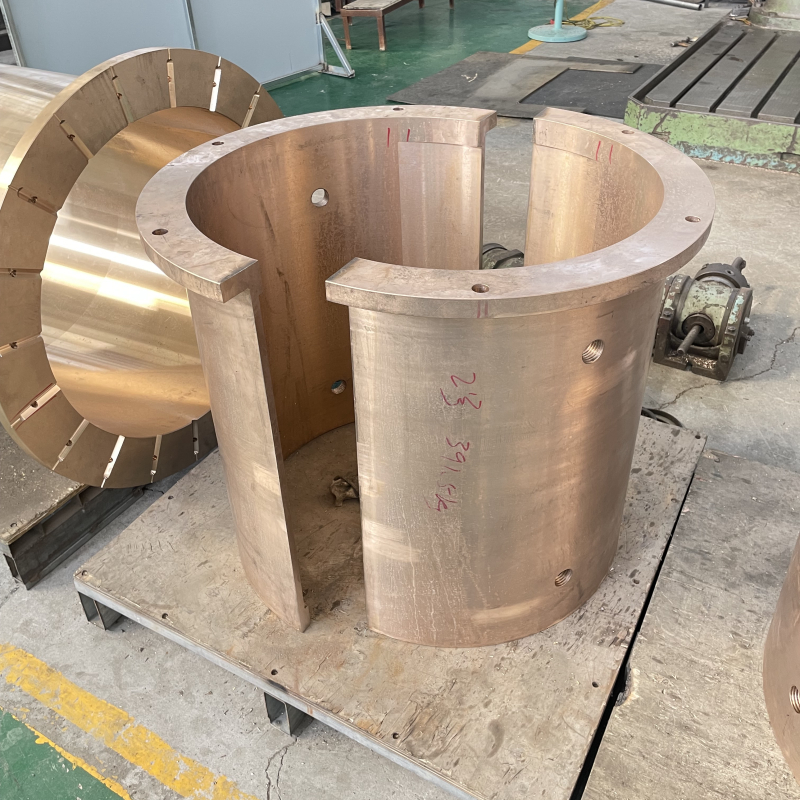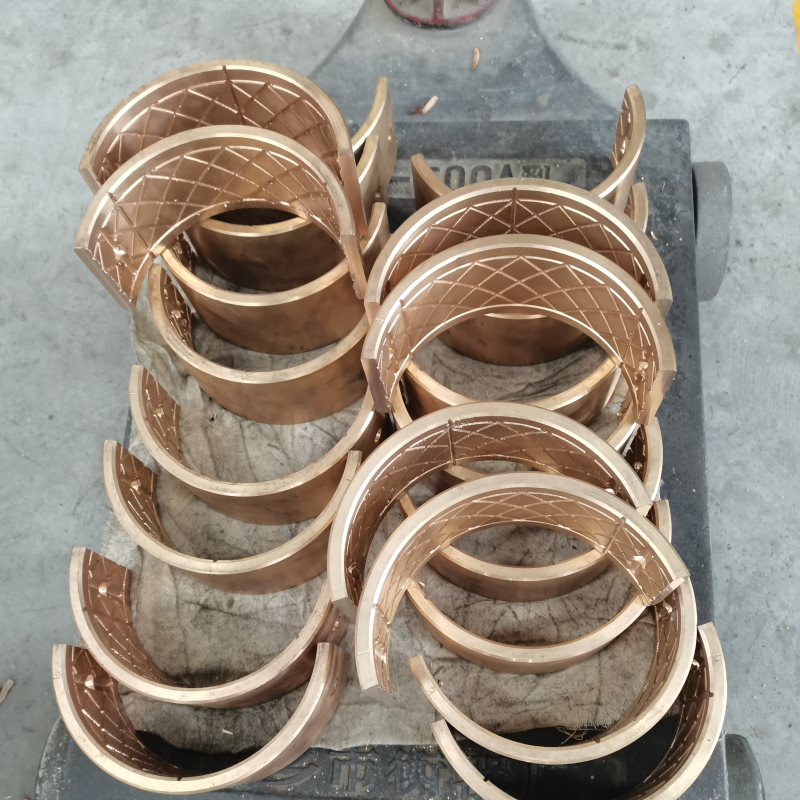 Mazhuang Village, Yuhe Town, Huixian City, Xinxiang City, Henan Province, China
Mazhuang Village, Yuhe Town, Huixian City, Xinxiang City, Henan Province, China
 Service Hotline +86 17630258963
Service Hotline +86 17630258963  Cell phone +86 17630258963
Cell phone +86 17630258963 Flange copper shaft tile deformation is mainly due to the following reasons:
1. Mechanical external force
Improper installation
If in the installation of the axial tile, the interference control is unreasonable, for example, the interference is too large, in the assembly process will make the axial tile is subjected to a large extrusion pressure. When this extrusion pressure exceeds the yield strength of the copper axle shaft tile material, it will lead to local plastic deformation of the axle shaft tile.
During the installation process, if the appropriate tools are not used or the operation method is incorrect, such as using a hammer to directly strike the surface of the axial tile, the axial tile will be subjected to uneven impact force, resulting in deformation of the axial tile.
Shaft system vibration and impact
During the operation of the equipment, if there is an unbalanced force, misalignment or other faults, it will cause vibration of the shaft system. The violent vibration of the shaft will be transmitted to the shaft tile, so that the shaft tile is subjected to periodic alternating force. This alternating force, over a long period of time, causes fatigue and deformation of the shaft tile material.
When the equipment is started, stopped or when the load changes suddenly, the shaft tile may be subjected to instantaneous shock loads. For example, when the motor is suddenly started or emergency braked, the impact force generated by the instantaneous change of shaft speed will act on the shaft tile, resulting in deformation of the shaft tile.

2. Temperature effects
High working temperature
When the equipment is running under high load for a long time or the heat dissipation condition is not good, the working temperature of the shaft tile will rise. Copper has a large coefficient of thermal expansion, and as the temperature rises, the shingles will undergo thermal expansion. If the shingles are not designed or installed with enough space for expansion, they will be deformed due to the constraints on thermal expansion.
Local overheating is also an important cause of distortion of the axial tile. For example, poor lubrication will increase the friction between the axle shingles and journals, generating excessive heat and leading to localised overheating of the axle shingles, which in turn causes localised deformation.
Frequent temperature changes
If the equipment is in a frequent start and stop or the working environment temperature changes are large, the shaft tile will continue to experience thermal expansion and contraction process. This repeated volume changes will make the internal thermal stress of the axial tile, when the thermal stress accumulates to a certain extent, it will lead to deformation of the axial tile.
3. Lubrication problem
Insufficient lubrication
Insufficient lubrication or blockage of the oil circuit will increase the friction coefficient between the axle shingle and the journal. According to the friction calculation formula (where is the friction force, is the coefficient of friction, is the positive pressure), in the case of the positive pressure remains unchanged, the coefficient of friction increases, and the friction force will also increase.
The increase in friction will generate more heat and increase the temperature of the axial tile, which will lead to deformation of the axial tile. At the same time, the lack of sufficient lubricant film support, the shaft tile will also be subject to the journal surface roughness peaks of the direct wear and extrusion, is also easy to cause deformation.
Lubricant contamination
Impurities mixed in the lubricant, such as metal particles, sand, etc., when these impurities enter the friction between the axle tile and journal, it will aggravate the wear. The presence of impurity particles will subject the surface of the axle tile to uneven wear and localised high stress, which will lead to deformation of the axle tile.
If the lubricating oil deteriorates, such as oxidation, emulsification, etc., its lubricating performance will be reduced, and it will not be able to effectively reduce the friction and heat dissipation, which will also increase the risk of axial shingle deformation.

4. Material and manufacturing defects
Material quality problems
If the material of the copper axle shaft tile is not pure enough and contains more impurities, it will affect the mechanical properties of the material. The presence of impurities may reduce the strength and poor toughness of the copper material, which is more likely to deform when subjected to external forces or thermal stresses.
Uneven organisation of the material is also a factor. For example, in the casting process, if the cooling rate is not uniform, it will lead to inconsistent grain size inside the shaft tile, resulting in residual stress. During the use of such a shaft tile, the residual stress will be superimposed with the stress generated by the external load, thus leading to deformation.
Manufacturing process error
In the processing of the axial tile, if the dimensional accuracy is not well controlled, such as the uneven wall thickness of the axial tile, when subjected to load, the thinner wall thickness of the parts will be more likely to produce deformation due to stress concentration.
In the manufacturing process, if the surface processing quality is poor, such as surface roughness does not meet the requirements, the actual contact area between the axial tile and the journal will be reduced, and the contact stress will increase, which will lead to local deformation of the axial tile.
